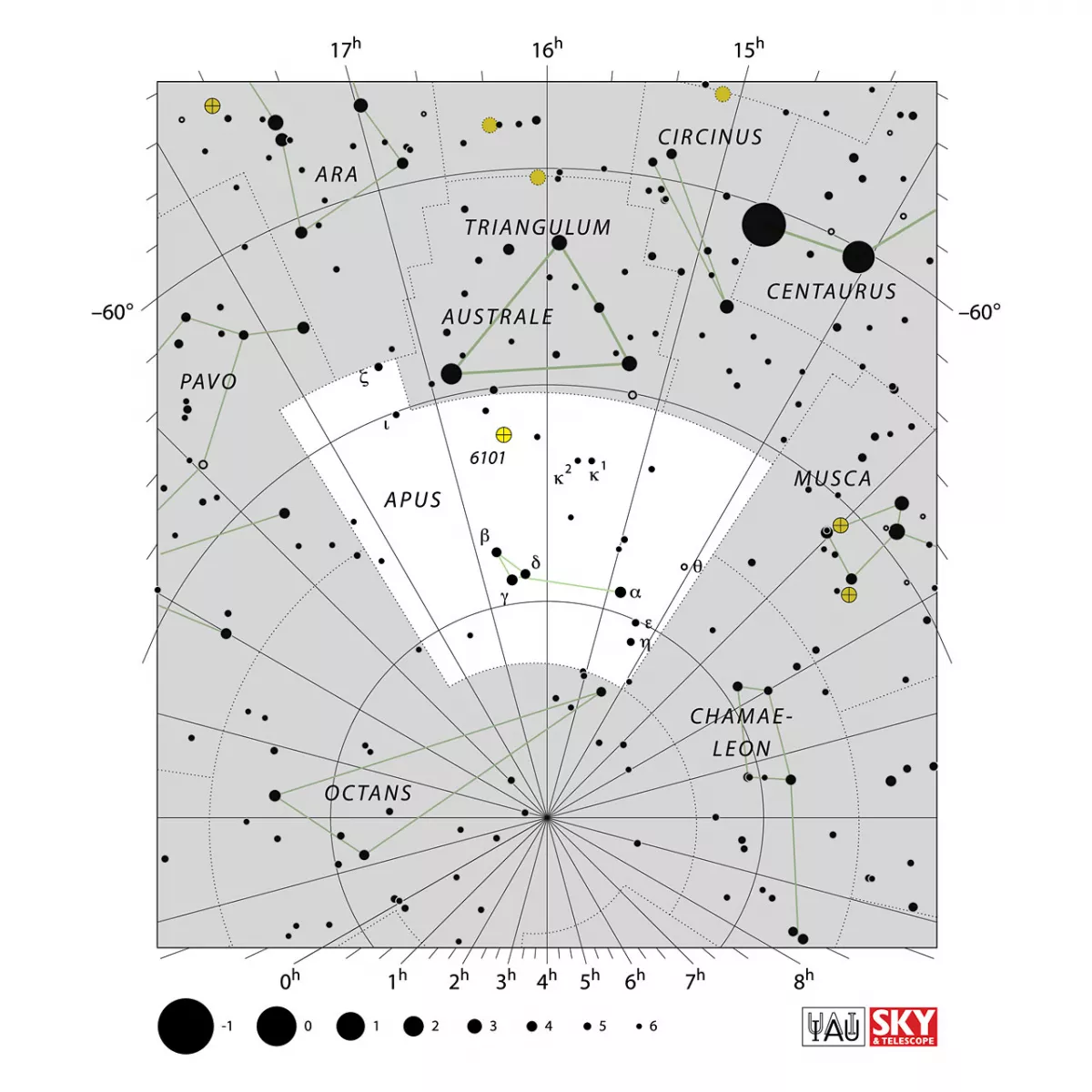Constellation Apus (Bird of Paradise)

Properties
Apus is an inconspicuous constellation near the south celestial pole, south of Triangulum Australe and has an area of 206 square degrees. The most striking feature is a small formation of four stars, reminiscent of a tablespoon. The constellation culminates around midnight on May 21, but is not visible from Central Europe. [9, 15]
Catalogues

History
The origin of this constellation is mostly attributed to Johann Bayer in his Uranometria from 1603, the first atlas of the entire sky. He had taken it from the records of numerous sailors in the southern hemisphere from the previous century, including Amerigo Vespucci. Bayer formed a total of twelve new constellations. [7]